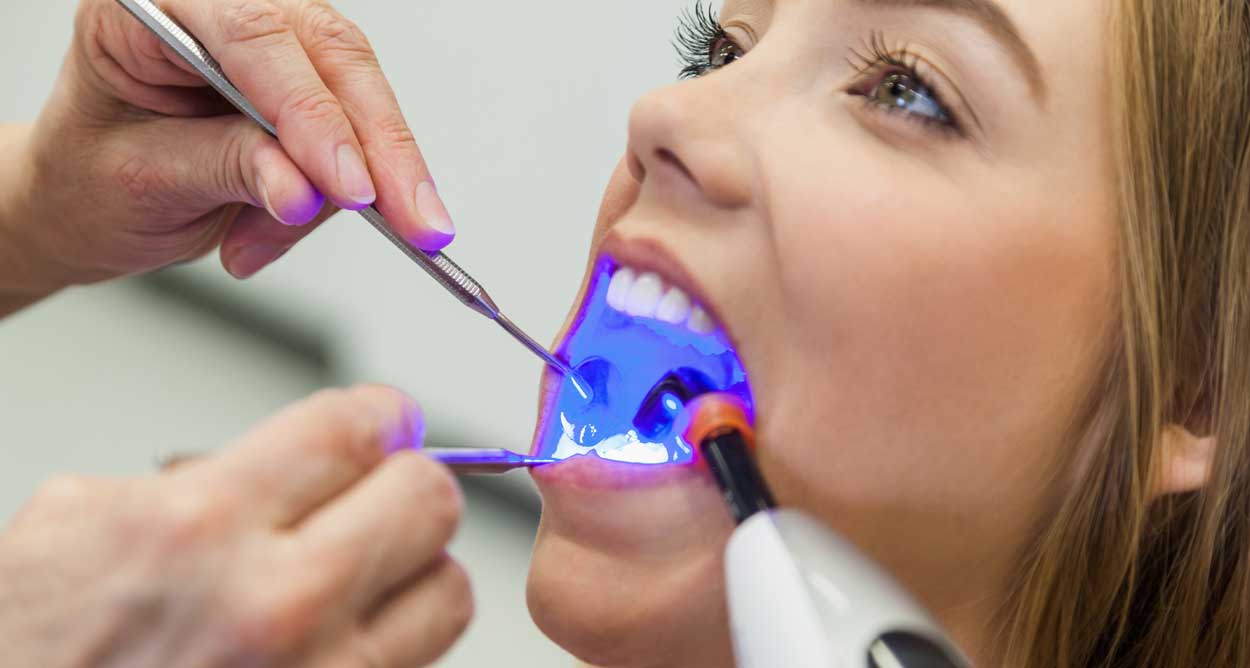
Composite Fillings
When your tooth suffers from bacterial decay, the dentist needs to remove the decayed part of the tooth and then fill up the empty space, i.e., the cavity left behind. If the dentist doesn’t fill up the cavity, it would continue spreading until it infects the rest of the tooth, which can lead to tooth loss as well.
Table of contents
What are the Different Types of Tooth Fillings?
What is one of the Best Filling for Teeth? Which Chemical Substance is Good for Filling Teeth?
Composite Dental Fillings Procedure
Composite Dental Filling Cost
Maintaining Composite Resin Fillings
Is a Tooth Filling Reversible if it Needs to be Redone?
Schedule a Dental Filling Appointment
Composite fillings are tooth-colored fillings inserted into the cavity. They look just like an actual tooth and blend in perfectly, which makes them one of the most popular types of tooth fillings out there. Please continue reading for a discussion of the different types of tooth fillings and the composite dental fillings procedure.
What are the Different Types of Tooth Fillings?
There are a number of different types of tooth fillings out there, all of them made of different types of materials. The following is an overview of the various types of tooth fillings.
Composite Fillings
Composite fillings are tooth-colored and they’re extremely durable and strong. They don’t crack under pressure, even if you constantly chew and grind your teeth. If you want your teeth to look completely natural without any indication of fillings, then they’re one of the best choice.
Table of contents
What are the Different Types of Tooth Fillings?
What is one of the Best Filling for Teeth? Which Chemical Substance is Good for Filling Teeth?
Composite Dental Fillings Procedure
Composite Dental Filling Cost
Maintaining Composite Resin Fillings
Is a Tooth Filling Reversible if it Needs to be Redone?
Schedule a Dental Filling Appointment
Cast Gold Fillings
Cast gold fillings are the strongest tooth fillings available, but they’re largely used for some of the rear-end teeth and molars because they stand out very obviously.
Silver Amalgam Fillings
Silver amalgam fillings are those fillings that are made of an amalgamation of different metals with silver. Compared to cast gold, silver amalgam fillings are fairly reasonable and they’re just as strong. Silver amalgam also shares the same drawback as cast gold fillings — the metallic colors are extremely visible so they’re largely used for hidden teeth. Furthermore, silver amalgam fillings don’t last very long because continued exposure to the environment eventually blackens them. You should also test to see if you’re allergic because some people may be allergic to the mercury.
Porcelain Fillings
Porcelain fillings are similar to composite fillings — they’re strong tooth-colored fillings. But porcelain fillings can also be quite abrasive and they’re very expensive.

What is one of the Best Filling for Teeth? Which Chemical Substance is Good for Filling Teeth?
Composite fillings are undoubtedly one of the best filling for teeth for a number of reasons.
- Discreet: Composite fillings look and resemble actual enamel and you can get them in a shade that completely corresponds with the shade of your own teeth. This ensures that no one will be able to tell the difference between the fillings and your actual teeth.
- Bonding: Composite fillings provide ideal support to your teeth because they chemically bond to your original teeth.
- Multi-Purpose: Composite fillings can be used to fill cavities, but they can just as well be used to repair chipped teeth. This means composite fillings can be used for a wider range of purposes.
- Minimally-Invasive: In some cases, the dentist has to remove a large part of the tooth’s structure in order to accommodate the filling. But, in this case, the doctor only has to remove the decayed part and no more to accommodate composite fillings.
- Long Lasting: Some fillings don’t last very long and some start getting discolored. Composite fillings can last you a lifetime if you take proper care of your teeth.
- Compatible: Metallic fillings aren’t suitable for everyone because some people can be allergic to them. But composite fillings are suitable for everyone and there’s no risk of allergies.
Schedule a Dental Filling Appointment
Composite Dental Fillings Procedure
The following are the various steps involved in the composite dental fillings procedure:
- The dentist uses anesthesia to numb the areas around the affected teeth so the procedure is completely painless.
- Depending on the dentist’s preference, he/she uses a drill, laser, or air abrasion device to extract the decayed part of the teeth.
- The dentist probes the teeth further to make sure that all of the decay has been removed.
- The cavity is thoroughly cleaned and all of the debris is removed to prepare it for the filling.
- In case the decay has spread close to the root, the dentist will also have to place a glass ionomer so the nerves aren’t harmed.
- The composite fillings will be layered into the cavity and then a special light will be used to harden them.
- Finally, the dentist will put the final touches on the teeth by polishing it and removing any extra parts.
Composite Dental Filling Cost
The average cost of composite dental filling ranges from $90 to $250 for a single tooth. The exact cost will depend on the location of the tooth and the amount of filling necessary.
Maintaining Composite Resin Fillings
Maintaining composite resin fillings is simple. You just have to maintain your regular oral hygiene:
- Use fluoride toothpaste to brush your teeth at least twice a day.
- Floss your teeth regularly, at least once a day.
- Use an antibacterial mouthwash to rinse your mouth at least once a day.
- Meet all of your dental cleaning appointments so the dentist can remove all the accumulated plaque and tartar from your teeth.
Is a Tooth Filling Reversible if it Needs to be Redone?
Tooth fillings are completely reversible and they can be redone. The dentist will have to reexamine your teeth using a dental x-ray to determine if there’s any more cavity. If so, the fillings will have to be removed and the dentist will have to remove more of the decay before applying new dental fillings. You should note that you lose more of your original tooth’s structure every time you get the fillings redone.
Schedule a Dental Filling Appointment
At URBN Dental Uptown , we make sure that we use dental fillings that perfectly align with your expectations and your teeth. We use composite fillings because they’re the most natural-looking fillings out there. For more information, please schedule a dental filling appointment today.
